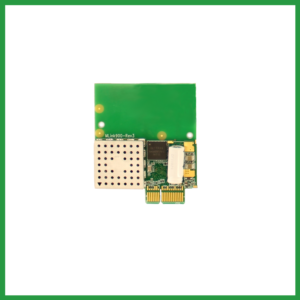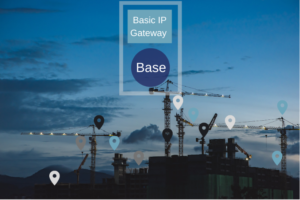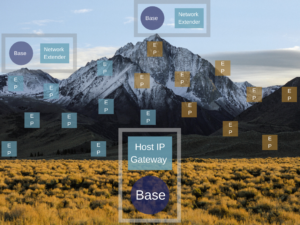Products
MLink Modem
The basic building blocks of the network are MLink Modems – energy wise yet both powerful and flexible. With both internal and external software APIs, communication with these powerful engines is both friendly and comprehensive. Advanced built-in features allow for such functionality as autonomous polling, always-on link maintenance, and sophisticated networking capabilities. An internal API and a multi-tasking operating system even allow for cost-effective custom embedded applications should you wish to have the functionality customized.
As shown in our store many options are available to suit different needs.
Function
- Endpoint
- Base
- Network Extender
Model
- Basic: (includes integrated antenna)
- GPS: (includes integrated antennae)
- Connectorized: (includes connectors for both external GPS and RF antennas)
Software
- Off the Shelf
- Customized application code
Region
- North America
- Australia/New Zealand
- Europe (available soon)
Basic Network
By combining off the shelf endpoints and bases simple point to point networks can be created. To help you get started generic interface cards are available. Connect to your host through convenient USB connections and you are ready to communicate. Now add additional endpoints to build a fully functional star network.
You will communicate with the base from your host equipped with a serial port. The host might be anything from a custom microcontroller to an off the shelf computer. Your MLink modem comes equipped with an edge connector that can be plugged into an MLink modem interface card that you custom build for your application or you can take advantage of a general purpose module offered by Aurora Wireless Networks. The general purpose module comes equipped with convenient LEDs (can be disabled to save energy), a USB interface, and a regulated supply option.
Communication with the endpoint depends on the application. You can communicate with an off the shelf MLink Modem in the same way that you do a base. However, for many applications, the simplest and most energy efficient approach is for the endpoint to be operated in an autonomous stand-alone fashion connected only to different sensors and a battery or other power source.
Aurora Wireless Networks offers combination packs that provide you with everything that you need to build a network. Here are the items that you will need to build a basic network:
- MLink endpoint modems
- An MLink base modem
- MLink interface cards (off the shelf or a custom card we can help you create for your application)
- Optional accessories such as external antennas, batteries, and RF friendly housings
If this is your first time developing an Aurora Wireless Network it is highly recommended that you start with an evaluation kit. It will enable you to get up and running quickly and efficiently.
Extended Network
Multiple base stations can be connected in an extended network to increase coverage, range, or both. Network extender endpoints combine with standard bases to create starlets. Starlets can then be combined within the normal star configuration to allow for tremendous flexibility (please refer to the technology page for more information).
Similar to the basic network, you can communicate with the host base using a host equipped with a serial port and an internet connection. However, the starlets operate autonomously and can be placed remotely (for example at the top of a building or mountain).
Communication with the endpoint depends on the application. You can communicate with an off the shelf MLink Modem in the same way that you do a base. However, for many applications, the simplest and most energy efficient approach is for the endpoint to be operated in an autonomous stand-alone fashion connected only to different sensors and a battery or other power source.
Aurora Wireless Networks offers combination packs which provide you with everything that you need to build an extended network:
- MLink endpoint modems
- Two or more MLink base modems
- One or more MLink network extender modems
- Modem interface cards (universal model or a custom design you create for your application)
- At least one modem interface card assembly.
- Optional accessories such as external antennas, batteries, and RF friendly housings
If this is your first time developing an Aurora Wireless Network it is highly recommended that you start with an evaluation kit. It will enable you to get up and running quickly and efficiently.





